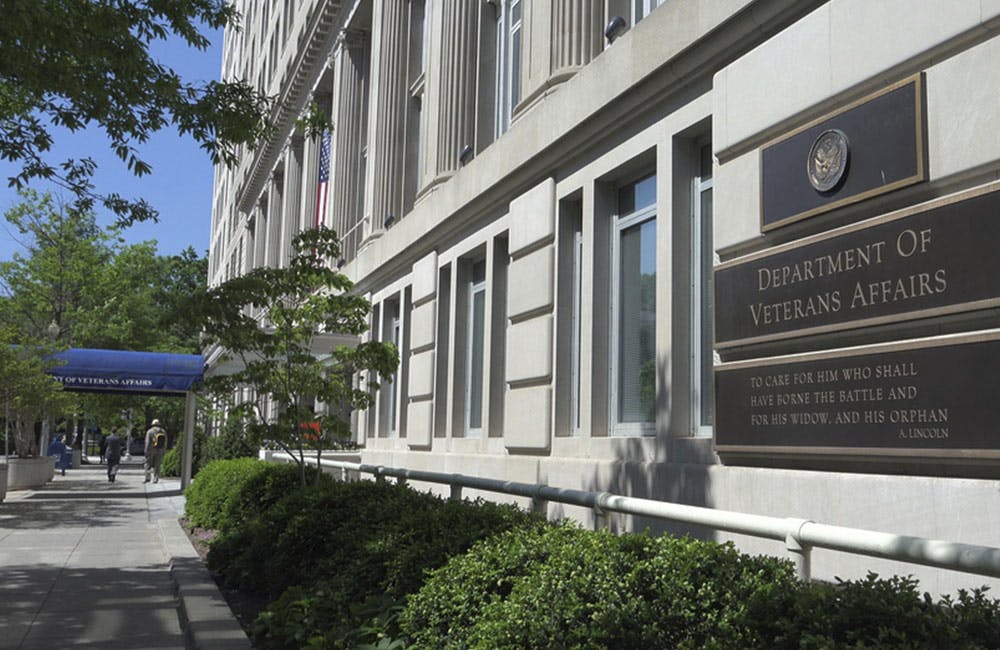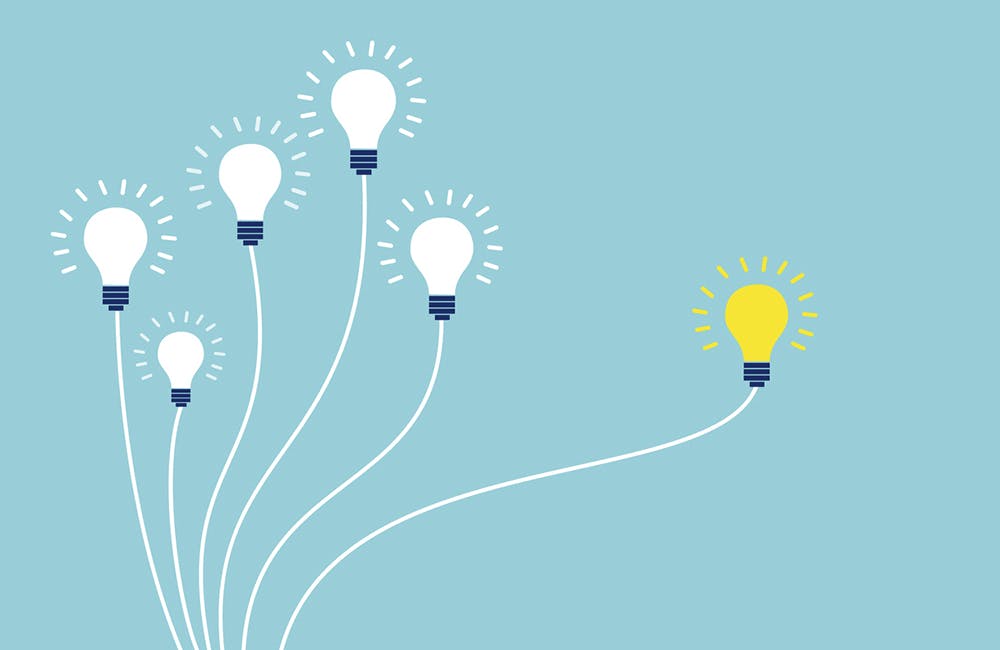Army CIO Raj Iyer Will Leave the Office ‘Sometime in February’
“My job as the CIO is done when Army senior leaders can explain the Army Digital Transformation Strategy just as well as I,” Iyer wrote announcing his departure from the Army.

As Raj Iyer — the Army’s first permanent CIO as well as the first civilian to hold the position — prepares to leave the office, he is spending the remainder of his time getting out into the field to reassure soldiers and leaders the digital path they embarked upon during his tenure is irreversible and laid a strong foundation for building the Army of 2030.
Iyer announced the end of his two-year contract last week and indicated his transition in the coming weeks. He told GovCIO Media & Research the exact date had not been finalized yet, but it would likely be some time in February.
It is not clear who will be appointed as his successor, but Iyer said that “it is very much up to the secretary to make that decision, and I have 100% confidence the Army will come up with another person that will deliver results even better than I was able to do.”
“When I made the decision to leave, I did a really honest assessment of where the Army was, the big Army, right? In terms of maturity to continue to do the work, solid understanding of the strategy, the vision, and the plans that we had in place, making sure that there was money in all the right places to address those priorities,” Iyer told GovCIO Media & Research in an interview. “It was important early on first identify the priority efforts, and then for those priority efforts are really getting us to the Army of 2030, that modernization of the Army, making sure that we were in a good solid place, and I believe that’s where we are. I have 100% confidence that the Army will execute the plan.”
Army Digital Transformation Strategy
When Iyer accepted the position in 2020, he had big goals for the Army. He envisioned setting the service on the path to achieving multi-domain operations by 2028. To accomplish that objective, the Army, an environment where everything was not data-centric, would have to become data-driven and democratize data for the next generation of warfighters.
“What the Army lacked was not technical expertise or resolve, but a vision and a direction for how to achieve that end state,” Iyer wrote in his Linkedin post announcing his transition.
Three months into his tenure, the OCIO drafted the Army Digital Transformation Strategy, setting three objectives for the service: to modernize, reform, and become tech-savvy.
“The Army Digital Transformation Strategy is all about taking the Army into the digital age and getting us to be much more data-centric in terms of decision making and in terms of how we operate the Army both from a warfighting perspective, as well as operations of the Army,” Iyer told GovCIO Media & Research last March. “Our aim is to get to a multi-domain capable force by 2028, and in support of that transformation … data is actually a critical asset. The Army Digital Transformation Strategy is all about us achieving that unity of effort and unity of vision in terms of aligning the organization around priorities to achieve that vision, and data and AI are two of those key components.”
Fast forward to today, the Army created the structural foundations needed to achieve what Army officials refer to as a “unified network” — the service’s effort toward the Defense Department-wide Joint All-Domain Command-and-Control (JADC2) initiative.
“If you looked at Army a couple years ago, we had two separate and distinct modernization activities, and they were not aligned. Those days are gone. We have fixed that. We’ve also aligned our cloud activities with our network modernization activities in this transition toward being data-centric,” Lt. Gen. John Morrison, deputy chief of staff for cyber at the Army, told reporters last August.
The service spearheaded multiple IT modernization efforts to improve user experience without compromising security last year, such as the Bring Your Own Device program allowing service members and civilians to work on their phones and home computers, as well as integrating over 160,000 employees into Google Workspaces.
Army Cyber Strategy
The Army developed its cybersecurity strategy last year. Unlike the Army Data Plan, the Army Unified Network Plan, and the Army Cloud Plan, the cyber strategy remains classified.
“Everything that we do in cybersecurity right now is, you know, really in this context of current zero trust implementation plans,” Iyer said in his most recent interview with GovCIO Media & Research. “So for both IT and operational technology, we are past a cybersecurity strategy and I think we are now well deep … in the zero trust implementation.”
Iyer said the service took all of its scattered efforts and programs that lived under the cybersecurity umbrella and put it under one program for zero trust last year.
“With the DOD reference architecture for zero trust, now we can really kind of see, okay, where do we fit? Where are the gaps, you know, and what is our roadmap to get to the end state by 2027?” Iyer said.
This is a carousel with manually rotating slides. Use Next and Previous buttons to navigate or jump to a slide with the slide dots
-

NSF Wants Industry Driving Quantum Innovation
The agency is pushing for partnerships to enhance the research community as Congress weighs additional legislation.
3m read -

Modernizing Critical Infrastructure in the Face of Global Threats
Officials are expanding the latest strategies in boosting defense infrastructure, including securing satellite communications, upgrading enterprise-wide technology, optimizing data management.
20m watch -

DOD Accelerates Software Modernization with Agile DevSecOps Push
The Pentagon's software implementation plan tackles cultural hurdles and integrates security early to deliver critical capabilities faster.
6m read -

VA's Platform One Powers Rapid Innovation to Bolster Digital Services
VA's Platform One accelerates software development timelines from weeks to hours, ultimately enhancing digital services for veterans.
5m read -

Opinion: Original Intelligence Is the Missing Piece for AI Transformation
Limitations of AI agents and development drive growing needs for workforce development and "original intelligence."
3m read -

The Next AI Wave Requires Stronger Cyber Defenses, Data Management
IT officials warn of new vulnerabilities posed by AI as agencies continue to leverage the tech to boost operational efficiency.
5m read -

Federal CIOs Push for ROI-Focused Modernization to Advance Mission Goals
CIOs focus on return on investment, data governance and application modernization to drive mission outcomes as agencies adopt new tech tools.
4m read -

Agencies Push Data-Driven Acquisition Reforms to Boost Efficiency
New initiatives aim to increase visibility of agency spending, improve data quality and create avenues to deploy solutions across government.
5m read -

Data Transparency Essential to Government Reform, Rep. Sessions Says
Co-Chair of the Congressional DOGE Caucus Rep. Pete Sessions calls for data sharing and partnerships to reduce waste and improve efficiency.
5m read -

DOD Can No Longer Assume Superiority in Digital Warfare, Officials Warn
The DOD must make concerted efforts to address cyber vulnerabilities to maintain the tactical edge, military leaders said at HammerCon 2025.
4m read -

Tracking CIOs in Trump's Second Term
Stay informed on the latest shifts in federal technology leadership as new CIOs are appointed and President Trump's second term takes shape.
6m read -

DHA CDAO Spearheads Master Data Catalog to Boost Transparency
Jesus Caban plans to boost DHA's data maturity through a new master data catalog, governance frameworks and inventory of tech tools.
5m read
















